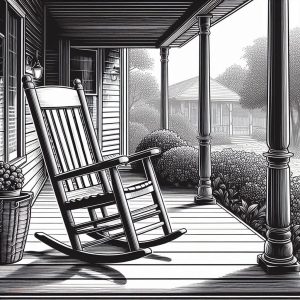By TedHendrickx
As I write this today, on the first full day of summer, a planned morning run has been delayed by what seems like a rarity right now – rain. It has not been the hail and wind-laden thunderstorms that have usually signified water from the sky this spring and summer. It has been a gentle rain.
Rain events seem to have been few and far between over the past few months. Temperatures have firmly locked themselves in the 90s for weeks on end. South Georgia counties are slipping farther into the categories of extreme drought and exceptional drought. North Georgia, which bore the brunt of dry conditions in the drought period of 2007-2009, is faring better so far. Most reservoirs are at 90% or better of storage capacity. Lake Lanier’s pool at the time of writing is 12 feet higher than it was during a corresponding period in 2007. But we still have the full months of summer ahead of us. It is the dry periods and the extremely wet periods that tend to get us all to think about water – my grass or garden is dead; my crawlspace is soggy.
Water is a year-round need for all of us. There are seasonal variations, with summer being the peak for outdoor water use for irrigation, car washing, and childhood sprinkler antics. There are ways to maximize water savings and efficiency throughout the year inside and outside the home. The 2010 State legislative session saw passage of the Georgia Water Stewardship Act (WSA), which was signed into law by former Governor Perdue in June of last year. The WSA includes incentives for increasing water stewardship and new conservation requirements. Beginning in July 2012, the legislation requires efficient water fixtures in all new residential and commercial construction statewide, as well as the installation of efficient cooling towers in new industrial construction. Also, for all new residential and commercial multi-unit projects, the bill requires sub-metering so that each unit will receive consumption reports and have an incentive to practice conservation measures.
Of immediate importance to most residential water users is the new statewide watering schedule. During non-drought periods, outdoor irrigation may take place 7 days a week only during the hours of 4 pm to 10 am. Newly installed landscaping may be watered at any time seven days a week, as can areas watered by hand-held shut off nozzles (like gardens). Other outdoor uses like car washing and pressure washing are on an odd/even schedule based on address. Odd-numbered addressed can use water for those purposes Tue-Thu-Sun, with even addresses limited to Mon-Wed- Sat. No water use of that type is allowed by anyone on Friday. These are just some highlights. There are other exemptions and circumstances for certain water use sectors. More information for City of Atlanta water customers may be found on the Department of Watershed Management website,
www.atlantawatershed.org/WaterRestrictions.htm.
There is also an important statement on the city website to think about: “Conservation should not be a reaction to circumstances; it should be a way of life. Clean water is a very precious resource, and it should be treated that way.” How can homeowners make conservation a way of life? There are many little things that can be done inside and outside the home to save water and save money that you spend on water. The WaterSense program by the U.S. Environmental Protection Agency has many tips available at www.epa.gov/watersense. Closer to home, Conserve Water Georgia has information on the Water Conservation Implementation Plan (WCIP) and state water resource planning activities (www.conservewatergeorgia.net). There is a wealth of information available at those and many other places, but here are some common everyday tips that you can easily start to do right now.
In the yard – set up and use rain barrels to water plants, collect air conditioner condensate in a bucket and add to your rain barrels, use native plants that are acclimated to normal rainfall in this area, push that broom, and don’t just hose down your walks and driveway.
In the house – install low-flow toilets. (1.6 gallons per flush is the norm now, it used to be over 3.5 gallons per flush in pre-1993 models, and even 5 gallons per flush before 1982). Turn off the tap when you brush your teeth; each person could save up to eight gallons per brushing. Pour unused cups of water in your plants, or share with Fido. That half-drunk glass of water shouldn’t just go down the drain. Even local restaurants like Midway in East Atlanta share leftover ice water with their landscape plants. Find and fix those leaks, faucets, toilets, and your meter; don’t drive by water running in the street either. Just call it in.
These tips and practices can help everyone exhibit a little more WaterSense.








Be First to Comment